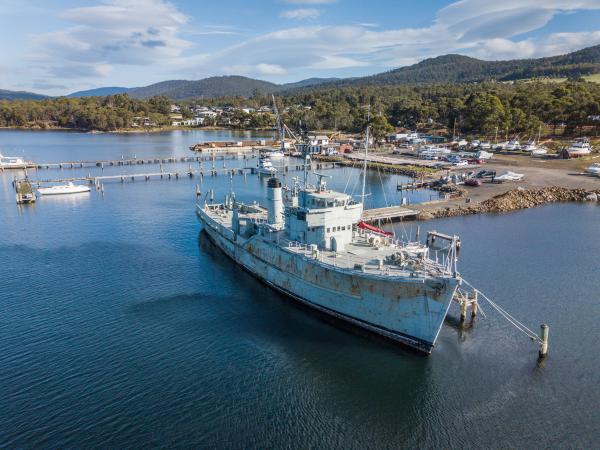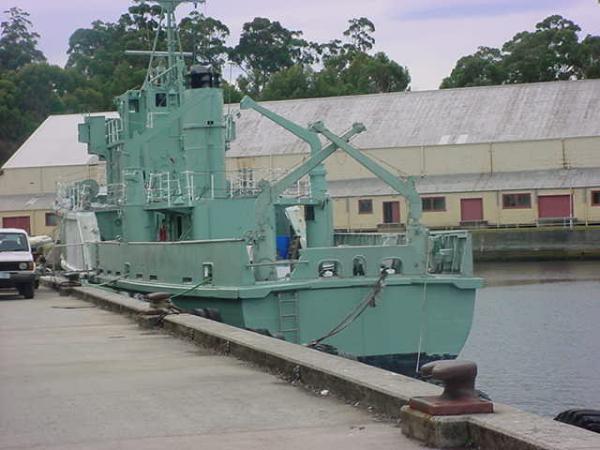Previous names
- HMS Chediston
- HMS Montrose
Details
Construction
Dimensions
History
CURLEW was launched as HMS CHEDISTON from the Montrose Shipyard in Scotland on 6 October 1953. The design was called the Ton class and they were built for minesweeping work. The Ton class's composite aluminium and double diagonal mahogany planked wooden construction was adopted as suitable for dealing with magnetic mines, and they were sufficiently quiet not to set off acoustic mines. CURLEW served with the Royal Navy until six of the vessels were allocated to the Royal Australian Navy and purchased in 1961. The vessels were re-engined with Napier Deltic diesels, fitted with air-conditioning and set up for work in Australian waters.
Arriving in Sydney in December 1962, the six vessels were located at the newly established base HMAS Waterhen in Waverton, North Sydney. They were known as the 16th Minesweeping Squadron until the late 1960s when they were re-designated the 1st Mine Countermeasures Squadron, a change that noted the new functions dealing with changes in mine warfare technology.
CURLEW was given pennant number M1121 and saw duty in many areas, usually in company with some of its sister ships. In 1963 it cleared World War II mines from Tonolei Harbour in Bougainville off Papua New Guinea, and in the mid-1960s it worked with RN craft during the Indonesian and Malaysian confrontation as a patrol vessel.
In 1968, CURLEW was converted to a minehunter. Previously as a minesweeper its principal function was to sweep a large area containing a minefield, often by towing a line and drogue which cut the wires anchoring mines in position, or towing a noise maker or magnetic loop to deal with other types of mine fields. As a minehunter it was fitted with high definition sonar set which could look ahead of the ship for individual mines that were then destroyed or degaussed by clearance divers.
CURLEW continued to operate in the Far East and Northern Australian waters, joining SEATO exercises and conducting specific operations, as well as a goodwill visit to Fiji and New Caledonia in 1971. In 1973 it was back in Australia and operating off South Australia on fishery patrols and exercises in Bass Strait.
HMAS CURLEW was decommissioned in 1990 and sold to private owners. Since then it has had a varied career as a dive boat, then floating casino and brothel in Rockhampton, central Queensland. In the mid 1990s it was bought by an ex-RAN Leading Cook, who was able to motor the vessel under its own power to Tasmania.
CURLEW has been used in two war films, 'Paradise Road' and 'The Thin Red Line' filmed in Queensland. Since 2010, it has been under long-term restoration in Tasmania under two different owners.
Key dates
-
1953
Vessel built by Montrose ship yard, Scotland
-
1953-1954
Escort ship to HMS Britannia for the Queen's coronation voyage around England, Scotland & Wales
-
1961
Left the service of the British Navy and went to Australia
-
1990
Left the service of the Australian Navy
Own this vessel?
If you are the owner of this vessel and would like to provide more details or updated information, please contact info@nationalhistoricships.org.uk


